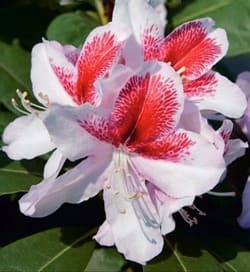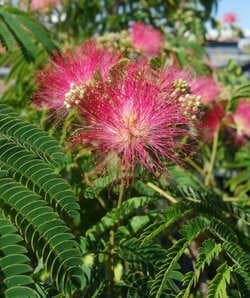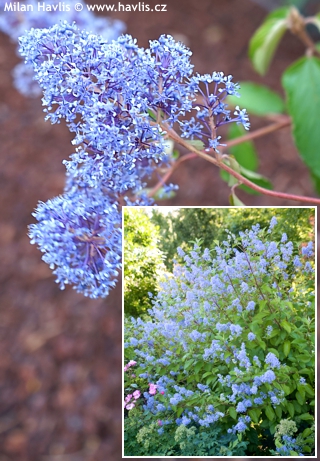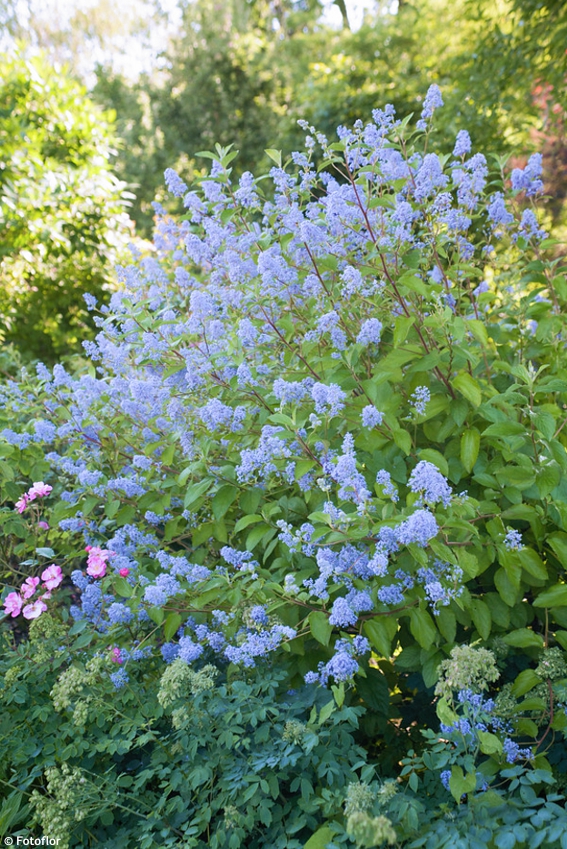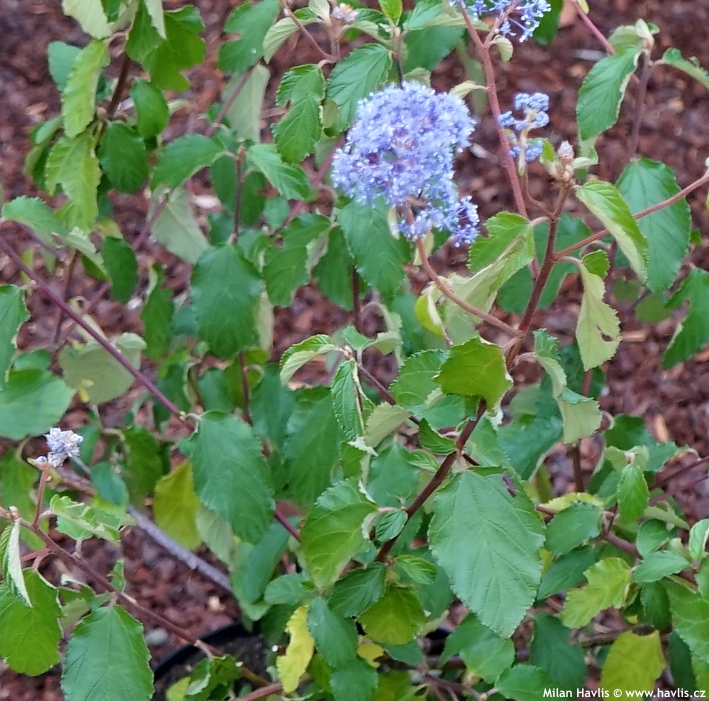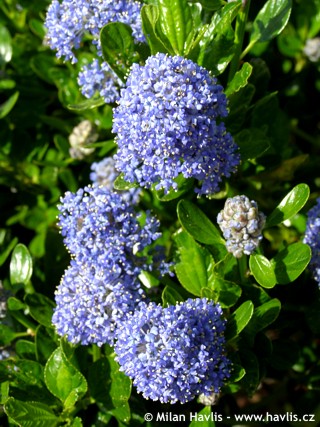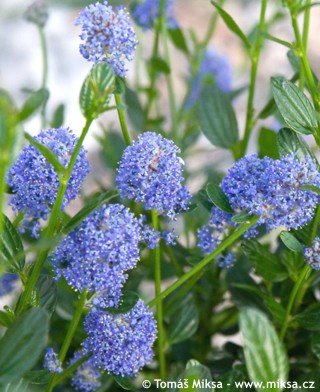Ceanothus x delilianus 'GLOIRE DE VERSAILLES' blueblossom, California lilac


Ceanothus
Blueblossom or California lilac is a genus of about 55 species. The evergreen are mostly from Mexico and W.USA, especially California, and the deciduous are native to E.USA and S.Canada. They are popular for their true-blue flowers. Only a few evergreen species and varieties can be cultivated in cold C.E. continental climate, always with some winter protection. On the contrary the deciduous hybrids such as c. x delilianus and c. x pallidus and further crosses are happy even here.
Gloire de Versaille is a French hybrid of California lilac, a cross between c. americanus, a Missouri native of excellent hardiness, and very tender Mexican species c. caeruleus with sky blue flowers. The result is a hardy, deciduous shrubs with a profusion of small panicles composed of powder blue flowers in summer and early autumn. Its leaves are broadly ovate, medium green and silvery grey beneath, not very glossy, 5-7 cm long, with less conspicuous veins.
It grows fast into and upright and slightly spreading shrub of dense yet airy habit. It serves a handsome specimen as well as a blue flowering item in a mixed hedge. For profuse flowering and a nice shape prune it back every year in spring after all frosts, to low permanent framework, leaving only 10-20% of previous year’s growth.
California lilac is more or less a prairie plant used to drought, sun, and heat. It needs fertile, free-draining soil of neutral to alkaline pH, adequately moist for the first year. Do not apply fertilizers for faster growth. Nitrogen would enhance production of foliage over formation of flowers. You can use a slow-release or phosphorus-based selective fertilizer for profuse flowering. It needs to be mulched well to be protected from severe temperature swings in winter and spring. Deciduous ceanothus does not require a sheltered position as it will always be hard pruned in spring. Hardy to about -25 °C (USDA zone 5b-6).
Last update 01-12-2020












